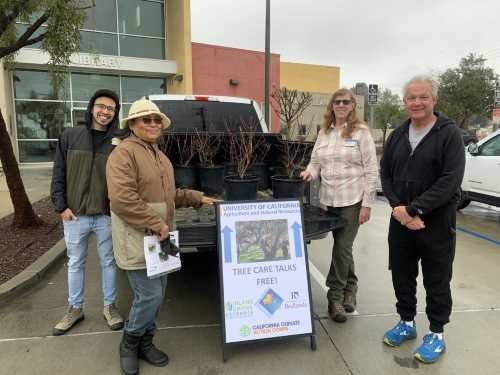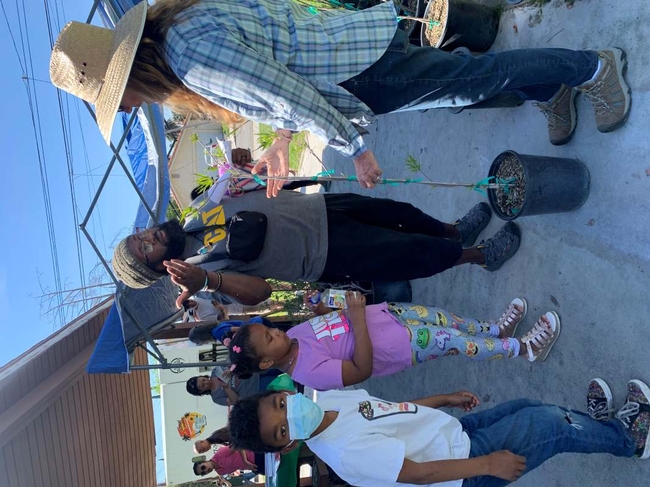A major focus of the UC Cooperative Extension (UCCE) Master Gardener program in San Bernardino County is the “Trees for Tomorrow Start Today” project in partnership with the Inland Empire Resource Conservation District and over 30 other community-based partners and agencies. Over the past four years, over 1,200 climate-resilient trees have been
Why is this project so important? California has the lowest per capita tree canopy cover in the United States, a mere 108 square feet, disproportionately impacting people of color. Many neighborhoods in San Bernardino, Los Angeles and Riverside Counties have tree canopy cover far below the recommended 25% - 40%, which is directly linked to extreme heat, high ozone concentrations, and high rates of cardiovascular and pulmonary diseases. A major reason for this low canopy cover is often due to fewer trees being planted on public and private properties in disadvantaged communities. Other reasons are tree loss due to poor tree species selection and lack of long-term maintenance, resulting in fewer than 40% of urban trees, on average, living beyond 20 years.
An important aspect of the project is its strong bilingual educational component that includes written tree planting and care information and in-person presentations describing the attributes of the climate-resilient tree species offered and tree care tips. Both help ensure that trees reach maturity, maximizing their ecosystem and social benefits. Another key
How do we select appropriate tree species? From the results of UC research and other credible sources. I've been fortunate to co- lead a project going into its 8th year at UCR, along with other ANR and USFS colleagues, to identify underplanted species of climate-resilient trees. While the project will continue for another 12 years, it's important to note that, to date, all but two of the twelve species in the trial (even with the irrigation water turned off since March 2020 which included 2-1/2 years of severe drought) are performing well with no major health issues.
Please contact me at jshartin@ucanr.edu if you'd like to be a partner or contribute trees or funding to purchase them. We are a non-profit 501(c)(3) organization, and your tax-deductible contribution is deeply appreciated!
With gratitude,
Janet Hartin